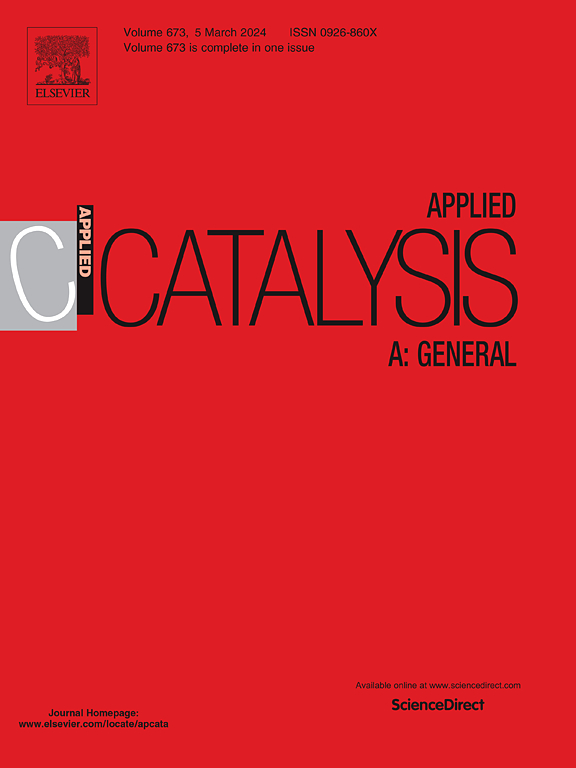Electrodeposited NiMoP coating on Cu nanorods array as efficient bifunctional electrocatalysts for urea-assisted hydrogen production
IF 4.7
2区 化学
Q2 CHEMISTRY, PHYSICAL
引用次数: 0
Abstract
The development of bifunctional electrocatalyst for hydrogen evolution reaction (HER) and urea oxidation reaction (UOR) with high catalytic activity and excellent stability can promote the application of hydrogen production by urea electrolysis. In this work, a three-dimensional composite heterogeneous electrocatalyst composed of NiMoP coating on Cu nanorods array on Cu foam (CF@Cu/NiMoP) is designed and synthesized. The CuO nanorods array constructed on Cu foam was used as the substrate for electrodeposition of NiMoP layer, while CuO substrate was reduced to Cu nanorods. The optimal deposition time was 20 min in both HER and UOR processes. Because the hierarchical nanorods array structure offers abundant active sites, accelerates electron transfer kinetics, and enables efficient multi-channel transport of electrolytes and gaseous byproducts, the optimized CF@Cu/NiMoP-20 has excellent HER and UOR performances with requiring only −94.9 mV and 1.395 V, respectively, to drive 100 mA cm−2. In addition, the overall urea-electrolysis system with CF@Cu/NiMoP-20 as bifunctional electrode provides 100 mA cm−2 at a remarkably low cell voltage of 1.596 V. This energy-efficient performance can be readily powered by a commercially available mercury-free alkaline battery.
Cu纳米棒阵列电沉积NiMoP涂层作为高效的双功能电催化剂用于尿素辅助制氢
开发具有高催化活性和优异稳定性的析氢反应和尿素氧化反应双功能电催化剂,可促进尿素电解制氢的应用。本文设计并合成了一种三维复合非均相电催化剂(CF@Cu/NiMoP),由NiMoP涂层在Cu泡沫上的Cu纳米棒阵列上构成。在Cu泡沫上构建CuO纳米棒阵列作为衬底,电沉积NiMoP层,同时将CuO衬底还原为Cu纳米棒。在HER和UOR工艺中,最佳沉积时间为20 min。由于层状纳米棒阵列结构提供了丰富的活性位点,加速了电子传递动力学,并实现了电解质和气体副产物的高效多通道传输,优化后的CF@Cu/NiMoP-20具有优异的HER和UOR性能,分别仅需- 94.9 mV和1.395 V即可驱动100 mA cm−2。此外,整个尿素电解系统以CF@Cu/NiMoP-20作为双功能电极,在1.596 V的极低电池电压下提供100 mA cm−2。这种节能性能可以很容易地由市售的无汞碱性电池供电。
本文章由计算机程序翻译,如有差异,请以英文原文为准。
求助全文
约1分钟内获得全文
求助全文
来源期刊

Applied Catalysis A: General
化学-环境科学
CiteScore
9.00
自引率
5.50%
发文量
415
审稿时长
24 days
期刊介绍:
Applied Catalysis A: General publishes original papers on all aspects of catalysis of basic and practical interest to chemical scientists in both industrial and academic fields, with an emphasis onnew understanding of catalysts and catalytic reactions, new catalytic materials, new techniques, and new processes, especially those that have potential practical implications.
Papers that report results of a thorough study or optimization of systems or processes that are well understood, widely studied, or minor variations of known ones are discouraged. Authors should include statements in a separate section "Justification for Publication" of how the manuscript fits the scope of the journal in the cover letter to the editors. Submissions without such justification will be rejected without review.
 求助内容:
求助内容: 应助结果提醒方式:
应助结果提醒方式:


